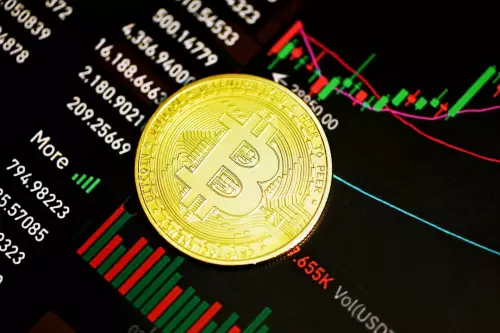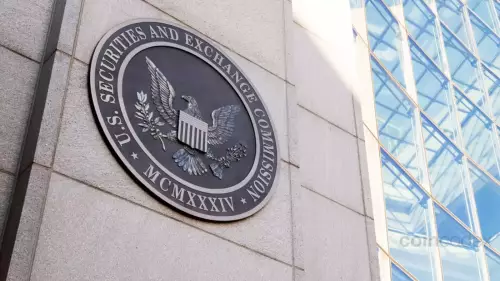 |
|
 |
|
 |
|
 |
|
 |
|
 |
|
 |
|
 |
|
 |
|
 |
|
 |
|
 |
|
 |
|
 |
|
 |
|
Cryptocurrency News Articles
Aster Exchange's XPL Token Price Glitch: A Deep Dive into the $4 Flash
Sep 27, 2025 at 12:00 am
Decoding the Aster Exchange XPL token's wild ride: hardcoded prices, a $4 spike, and the aftermath. What happened and what it means for DeFi.

Hold onto your hats, crypto enthusiasts! The Aster Exchange and its XPL token recently provided a rollercoaster ride of epic proportions. A price glitch sent the XPL token on a wild journey, leaving traders both bewildered and potentially lighter in the wallet. Let's break down what happened and what it means for the future of decentralized finance (DeFi).
The XPL Price Anomaly: A Perfect Storm
On a seemingly ordinary Thursday, the XPL token, linked to Plasma's stablecoin optimization blockchain, experienced some extraordinary price action on Aster Exchange's perpetual futures contracts. While spot markets saw XPL trading within a reasonable $0.74 to $1.54 range, the futures market painted a far more dramatic picture. Traders watched in disbelief as XPL briefly soared to $4 before plummeting to a low of $0.55. This volatility understandably created confusion and led to losses for those trading on Aster's platform.
The Hardcoded Price Theory: A Potential Culprit
So, what caused this madness? The leading theory, circulating among crypto sleuths on social media, points to a critical misconfiguration: hardcoded prices. The claim is that Aster Exchange had hardcoded XPL's oracle price to $1, effectively treating it like a stablecoin despite its free-floating nature. Further, the mark price, which should reflect real-time market data, was allegedly capped at $1.22. This artificial ceiling prevented the price from accurately reflecting trading dynamics.
According to this theory, when the price cap was finally lifted, pent-up buy orders overwhelmed the available liquidity, sending XPL skyrocketing to $4 before it stabilized. While Aster Exchange hasn't officially confirmed this explanation, it's gained considerable traction within the crypto community. As Guthix🫵 (@GuthixHL) succinctly put it on X:
Index price was hardcoded to $1; Mark price was capped at $1.22; When they removed the price cap, it spiked to $4 while prices remained stable on other exchanges. This was a result of gross negligence on the exchange operators. No exploits/etc.
Expert Weigh-In: Risk Controls Under Fire
The possibility of hardcoded values in a live derivatives market has drawn sharp criticism from industry analysts. 0xToolman, an on-chain investigator with Bubblemaps, emphasized the inherent risks of such practices, stating that "Those values should never be hardcoded." He further suggested that mismatched orders likely exacerbated the price swings once the cap was removed.
Aftermath and Market Reaction
Following the glitch, XPL has stabilized around $1.20, aligning with CoinGecko's valuation. However, Aster's governance token took a hit, dropping 4.4% to $1.89, reflecting traders' diminished confidence in the platform's stability. The incident also serves as a stark reminder of the complexities inherent in perpetual futures contracts compared to spot trading. While spot trading involves direct ownership of the asset, perpetual futures allow speculation on price movements, requiring accurate index and mark prices to ensure fair trading. Misconfigurations, as allegedly seen with XPL, can lead to significant market imbalances.
Aster's Response: Refunds Issued
To their credit, Aster Exchange has taken steps to rectify the situation. They've issued refunds in USDT to users who suffered losses due to the price anomaly. The exchange has confirmed that all affected users have been reimbursed and has advised those still awaiting compensation to contact them through their official Discord channel.
The Bigger Picture: DeFi Lessons Learned
The Aster Exchange XPL incident highlights the importance of robust risk controls and transparent pricing mechanisms in DeFi. While the space offers exciting opportunities, it also comes with inherent risks. It's crucial for exchanges to prioritize security and accuracy to maintain user trust and prevent future incidents. The saga also showcased the power of community investigation, with crypto enthusiasts swiftly piecing together the hardcoded price theory.
Wrapping Up: A Bumpy Ride, But a Learning Experience
So, there you have it – the wild tale of the Aster Exchange XPL token price glitch. It was a bumpy ride, no doubt, but one that hopefully serves as a valuable lesson for the DeFi community. And hey, at least affected users got their USDT back! Now, if you'll excuse me, I'm off to find a less volatile corner of the crypto-verse. Maybe I'll just stick to hodling Bitcoin... for now.
Disclaimer:info@kdj.com
The information provided is not trading advice. kdj.com does not assume any responsibility for any investments made based on the information provided in this article. Cryptocurrencies are highly volatile and it is highly recommended that you invest with caution after thorough research!
If you believe that the content used on this website infringes your copyright, please contact us immediately (info@kdj.com) and we will delete it promptly.






























































